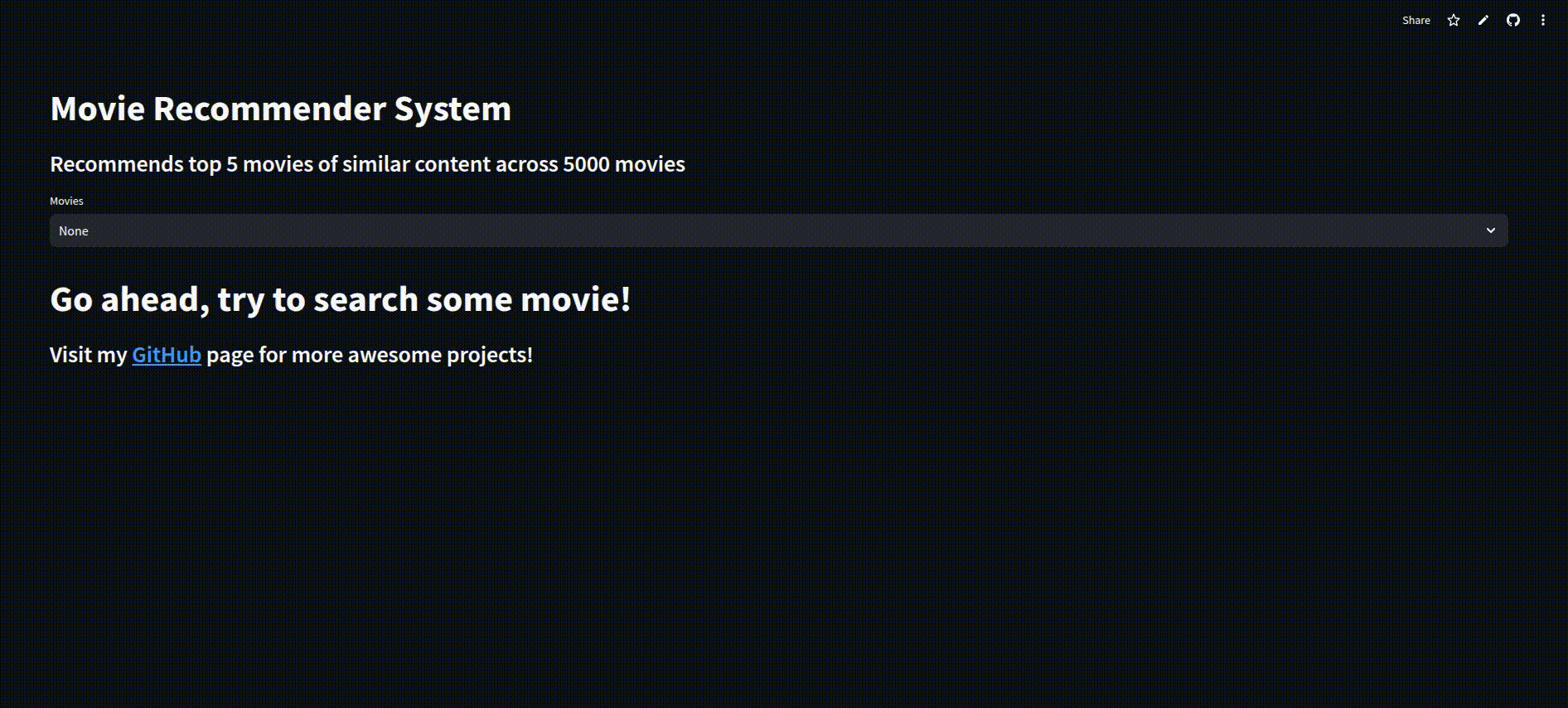🎬 just another movie recommender system 🎬
A streamlit application which recommendes movies using imdb dataset.
the problem: too many choices
Ever found yourself endlessly scrolling through movie lists, struggling to pick the perfect one? We’ve all been there. Platforms like netflix, amazon prime, and disney+ seem to know exactly what we’d like to watch next—but how do they do it? 🤔
Curious about the magic behind these recommendation systems, I decided to build my own movie recommender system! 🎬 Not just to solve my own indecisiveness but also to deep dive into how machine learning powers personalized recommendations.
the approach: content-based filtering
When it comes to recommendation systems, there are multiple approaches. Many platforms, like Netflix and Spotify, use Collaborative Filtering, which relies on user interactions—what users watch, rate, or interact with. However, since I wanted to focus purely on understanding how movies are related to each other based on their descriptions and genres, I implemented a Content-Based Filtering system.
but how does content-based filtering work?
Content-Based Filtering recommends items (movies, in this case) based on their features rather than user behavior. The idea is simple:
- If you like a movie, chances are you’ll enjoy another movie with similar content (genre, description, cast, etc.).
- Instead of relying on user preferences or ratings, the system analyzes the actual content of the movie and finds others that are closely related.
extracting meaning from movie descriptions: TF-IDF vectorization
Since the core idea is to recommend movies based on their plot summaries, I used TF-IDF (Term Frequency-Inverse Document Frequency) Vectorization.
why TF-IDF?
Movie descriptions are just blocks of text, and machine learning models need numerical input. TF-IDF converts text into meaningful numerical representations by:
- Emphasizing important words that appear frequently in a movie’s description.
- Reducing the weight of common words like “the” or “and” that appear in almost every description.
This way, we can capture the essence of a movie’s storyline and compare it with others.
measuring similarity: cosine similarity
Now that each movie’s description is transformed into a numerical vector, we need a way to measure how similar two movies are. This is where Cosine Similarity comes in.
why cosine similarity?
Cosine Similarity measures the angle between two vectors in a multi-dimensional space. If two movies have similar descriptions, their vectors will be close to each other, and the cosine similarity score will be closer to 1 (meaning they are very similar).
mathematically, cosine similarity is calculated as:
\[\text{cosine similarity} = \frac{A \cdot B}{||A|| ||B||}\]where:
- ( A ) and ( B ) are the TF-IDF vectors of two movies.
- The dot product in the numerator measures the similarity between the vectors.
- The denominator normalizes the values, preventing bias from longer descriptions.
final flow of the recommendation system

result
Instead of random or generic suggestions, the model intelligently picks movies that have a similar storyline, genre, and themes, just like how real-world recommendation engines work! 🎬🔥
This approach gave me a hands-on understanding of how platforms like Netflix generate recommendations, and I’m excited to improve it further by experimenting with hybrid models in the future! 🚀

